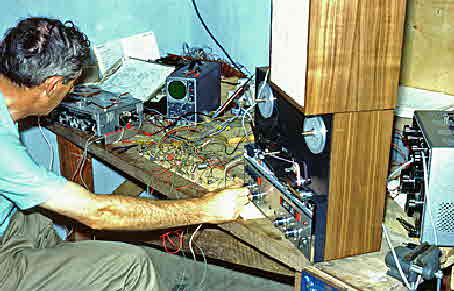|
 In order to verify our findings we decided to check the relevant words and sentences in the phonetic laboratory. In order to verify our findings we decided to check the relevant words and sentences in the phonetic laboratory.
David Jackson developed a special circuit. With this device it was possible to visualize tone height together with the sound waves. For each track another microphone was used. The result was that we could distinguish not only between 3 main tone levels in Mumuye, but also make visible gliding tones.
The waves and tone height diagrams were printed out with one of the first ink-jet printers available.
|

